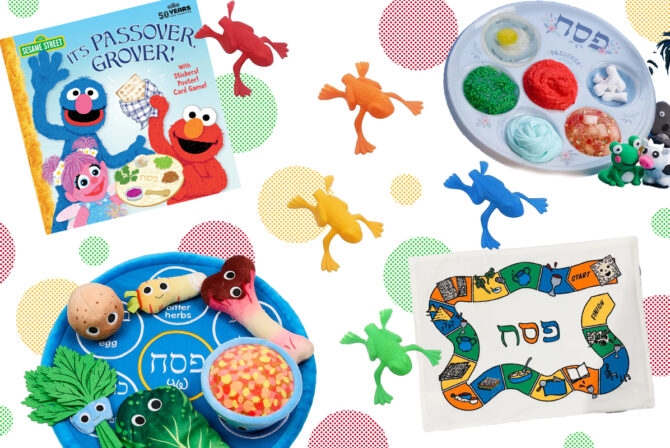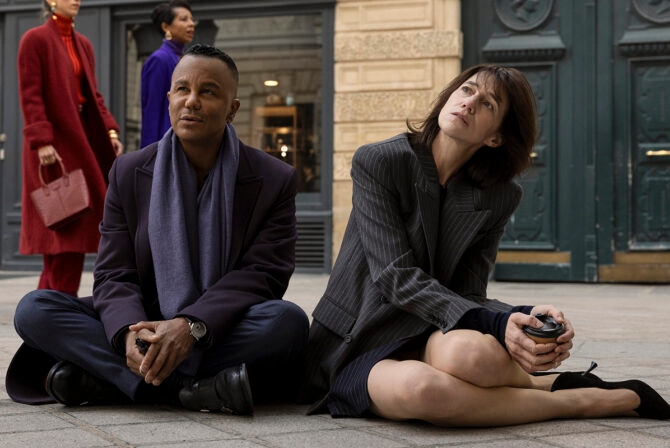My paternal grandparents were survivors. My maternal grandparents both fought in the American army, my grandmother a captain and my grandfather a sergeant. One side of the family thought of that war as the Holocaust, the other as World War II. One was liberated, the other was liberating. Regardless, I got the message growing up. There were people in my family that were no longer alive; all murdered because they were Jewish. I knew exactly what anti-Semitism meant.
I knew it because not a family gathering went by during which my own father didn’t acknowledge his parents’ past. No Thanksgiving meal or Passover Seder was, or is, complete without my father choking up in tears, speaking of atrocities that felt strange to me as a girl, so close and yet so far away.
My mother, an artist, did an entire show on the Holocaust. Her artwork filled our home, taking its place side by side with the mundane. I grew up with small baby food jars filled with ash and lined with transparent photos of children gassed in the camps. For a long while coffins were stacked by our staircase. I nonchalantly explained to friends that it was just coffins, just the faces of murdered children, no biggie. I was taught anti-Semitism by the mere faces of my wrinkled, heavy accented grandparents. I knew what it was, as it filled my home in a physical sense. No one had to teach me, no one had to show me. I read books, I saw photos, as a very young girl I even read my father’s PhD thesis on the multigenerational effects of the survivor syndrome across three generations; I being one of those generations.
I was okay though, it wasn’t going to get me. I lived in America.
Then I birthed my own generation, and things changed, yes, even here in America. My eldest daughter is seven. She doesn’t know the word anti-Semitism. She doesn’t know about the Holocaust. She wouldn’t recognize a swastika if it was spray painted in front of her face. She learned in school that there are bad people in Israel who don’t like us because we are Jewish. This is what she told me at age 4. I thought, yes, let her believe this hatred is isolated to one place. Let my large-eyed, innocent child think we are safe because we are here in America. Even I wanted to believe that.
But then things began to get very frightening, right here, in our beloved country, which stands for liberty and justice for all. Bomb threats to Jewish day schools, vandalism on synagogues, desecration in Jewish cemeteries. And not too long ago, even in my own neighborhood, vandalism on Jewish properties. There is no denying a surge in anti-Semitism in the US, and even I started to feel vulnerable.
I thought of my eldest, I thought of her being caught off guard, I thought it was time.
Unsure how to approach such a frightening subject with my eldest child, I turned to the story of Purim A holiday understood by our children as festive and lighthearted, goodies and costumes and merriment, our shortest and yet most lively and fun of all our holidays. Yet somehow we often manage to overlook that a holocaust of its own was on the verge of taking place, a decree that every citizen in King Achashverosh’s vast kingdom had his royal permission to kill every Jew —every man, woman and child simply because they were Jewish. This story that I have gone over and over with my daughter since the moment she could follow a picture book, was the perfect tool to teach her about the realities of anti-Semitism.
Each year before Purim, I read to my children the story of the Megillah using a book of colorful pictures. This time, though, as soon as we reached Haman and his hatred for the Jewish people, I paused. I didn’t really want to do it. I didn’t want to tell my daughter that people hate her simply because she is a Jew. I didn’t want to use words like hate, anti-Semitism, kill, dead, Holocaust, Hitler, but I had to. I owed it to her to be prepared, to be informed. She asked questions, and we used the story of Purim to help guide us through difficult ideas. We looked to the faith of Esther and Mordechai to talk about our own faith. We discussed the hidden acts of God, and how even in times when it feels hopeless, He is there. We talked about her great grandparents, we talked about ant-Semitism from as long ago as the story of Purim, to as present as right now, right here, in our own hometown.
I told my daughter, yes, people hate us because we are Jewish, but because we are Jewish, we will never hate. She said she would always be brave, she said she would always believe, and I told her God will always keep us safe, no matter what. Because even if some of us get hurt, or don’t survive the hate of others, God has always seen to it that as a people we endure.
I’m thankful the Purim story has a happy ending. I’m thankful that we were able to return back to the Megillah and finish our discussion with bright pictures of how we celebrate the holiday. I hope that is how my daughter deals with hate, by utilizing love and joy to battle it, by giving gifts to the poor, baskets of food to friends and family and learning a sense of unity among ourselves and others even in the face of division and oppression.







